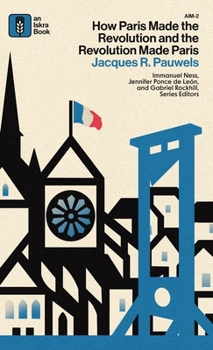How Paris Made the Revolution and the Revolution Made Paris: From France's Royal City to B
How Paris Made the Revolution and the Revolution Made Paris offers a lucid, street-level account of how the French capital and its people forged one another across a hundred turbulent years. Historian Jacques R. Pauwels traces four great upheavals-1789-99, 1830, 1848, and the Paris Commune of 1871-revealing how artisans, workers, and sans-culottes first shattered royal power and later clashed with a rising bourgeois order intent on remaking the city in its own image. Each chapter pairs concise narrative with a guided itinerary, allowing readers to walk from Versailles to the Bastille, the H tel de Ville, and the "invisible" Paris of vanished alleys and barricades while grasping the class forces that animated those spaces.
Pauwels argues that Paris did more than host revolution: its geography, policing, and architecture actively produced and contained revolt, culminating in Baron Haussmann's boulevards-celebrated as modern progress yet engineered to prevent future insurrections. Along the way, he revisits classic questions-why 1789 turned radical, how 1848 gave way to empire, why the Commune still matters-always anchoring analysis in the lived experience of ordinary Parisians and the global currents of anti-imperialist struggle.
Ideal for scholars, students, radical tourists, and general readers alike, How Paris Made the Revolution re-centers the city's history on the working classes who built-and repeatedly tried to reclaim-"the bourgeois Babylon." It reminds us that the stones of Paris still echo with the promise that another city, and another world, remain possible.





